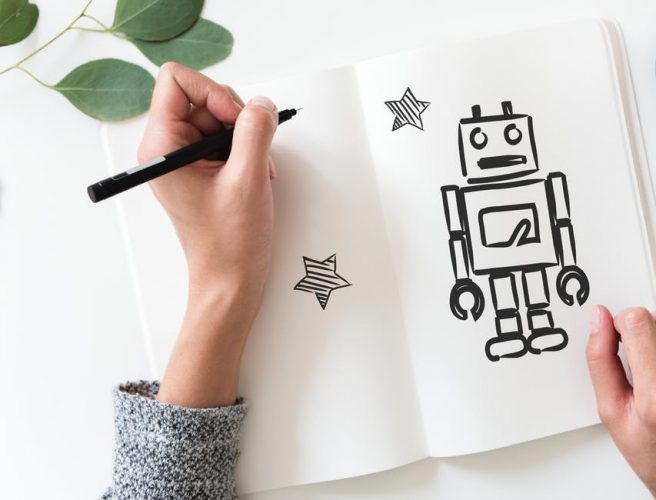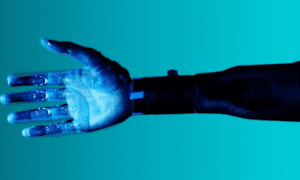The future as we used to see it in movies is almost here. We have a variety of gadgets that facilitate all our everyday tasks, we talk to our virtual assistants and follow their advice. There are many incredible machines that change our lives, but artificial intelligence (AI) is, probably, the most unique and amazing thing ever created by mankind.
Although we have so many technological advancements, some aspects of our lives remain old-fashioned and change slowly, though having a need for improvements. For example, let’s take a look at modern education. At first glance, our schools have a little to do with those of the middle of the 20th century, but on the other hand, they didn’t change much. Blackboards were replaced with smart boards, teachers use tablets, but the educational process itself is almost the same as 50 years ago.
Will we see any major shifts in education? It’s a hard question to answer, but we see how AI enters various spheres of our lives so we can expect it to change the future of education as well. Along with machine learning, artificial intelligence can improve our educational tools and become a basis for completely new methods. According to the statistics, AI in the US education sector is expected to grow by 47% from 2018 to 2023. Most experts agree that the presence of teachers is necessary and irreplaceable but their job is certainly going to change.
The Role of AI in Education (and Vice Versa)
AI has long been a part of video games, acting as antagonists of any kind. It was taught to interact with different elements of the environment, hiding from bullets, and choosing better weapons. However, it was only the beginning, and scientists have quickly realized the capabilities of this technology and its possible applications. AI learned to draw, to create music, and to write novels. Today, many educators are thinking of the benefits of AI for education. We know that AI can learn, and this ability makes it a perfect fit for such an area.
Every time we hear about the use of AI in some industry, there are the same concerns: Will it replace humans? What impact will automation have on jobs? The workforce always changes under the influence of advances. The only difference between AI and other innovative technologies is that it impacts many different fields at once. It is associated with the increased computing power and more efficient algorithms. Furthermore, AI improves faster than educational institutions and other companies can adapt to its new capabilities. Kevin Marr, an IT expert from College-Writers, notes: “To understand how AI is going to change jobs, we should ask ourselves, what we are good at, and what AI can’t do? We know that computers are better at calculations but they lack social skills and creativity.”
The Use of AI in Education
Still far from replacing teachers, AI is nevertheless a useful tool for them. AI-based solutions can fill many gaps in the existing methods of teaching, facilitating some common tasks and giving teachers more time and freedom to focus on understanding, support, and other things that machines cannot do. Artificial intelligence also offers many new opportunities. For example, Presentation Translator is an AI-based plugin for PowerPoint which automatically adds subtitles to what teachers are saying. Such tools can help create global classrooms that would include students who speak other languages. It is also a solution for students who cannot attend classes because of sickness or want to learn more about some subject that is not presented in their own school.
There are also companies that work on individualized learning methods. Carnegie Learning and Content Technologies are developing educational platforms that use AI to provide feedback and testing to pre-college students, assessing their knowledge and suggesting new topics. As AI learns and improves, it might be able to read facial expressions to understand if a student has difficulties with some topics, being able to modify the complexity of a lesson.
How to Get the Best Out of AI in Education
- First of all, AI can quickly evaluate students’ progress, identifying their strong and weak sides, and adapting educational programs to their knowledge. Such an approach would help students focus on things they are mostly good at, detecting the areas that need to be improved.
- AI can also analyze the effectiveness of the educational program and find gaps in courses. For example, when too many students fail some assignment, AI can analyze this part of the course and suggest some changes in the program or add some necessary guidelines.
- Of course, the most obvious application of artificial intelligence is automation of administrative routine. All the teachers spend a lot of time grading students’ homework and other assignments, while AI can do it much faster, providing useful recommendations at the same time. Machines are already good enough to grade multiple-choice tests, and soon they are expected to be able to grade even more complicated written assignments.
- Artificial intelligence has a great potential for tutoring, supporting students while they’re working on their homework or prepare for tests at home. As AI evolves, it can improve tutoring programs, responding to different learning styles. AI can also provide personalized feedback.
- Machine learning can be also used to analyze the neuroscience data, monitoring students’ interaction with educational materials (for example, videos), and detecting those parts of a video that seem to be too difficult for students so they rewatch them a few times. This approach could help quickly understand what exactly is difficult for students, adjusting the pace to each student’s needs.
Conclusion
Such technologies as AI, deep learning, and machine learning are already disrupting many industries, and education seems to be the most natural area of application for artificial intelligence, which also learns. Even though AI may change the educational process as we know it, machines are unlikely to replace teachers in the near future. However, what they can do even now is make many cumbersome tasks simpler and personalize the learning process so that every student can get the most necessary information.
About the Author
Ester Brierley is a QA Engineer in software outsourcing company, a seasoned content creator for CollegeWriter.com and different digital blogs. Passionate about writing, she adores researching cutting-edge trends and sharing them in her writing pieces. You can follow her on Twitter.



















































